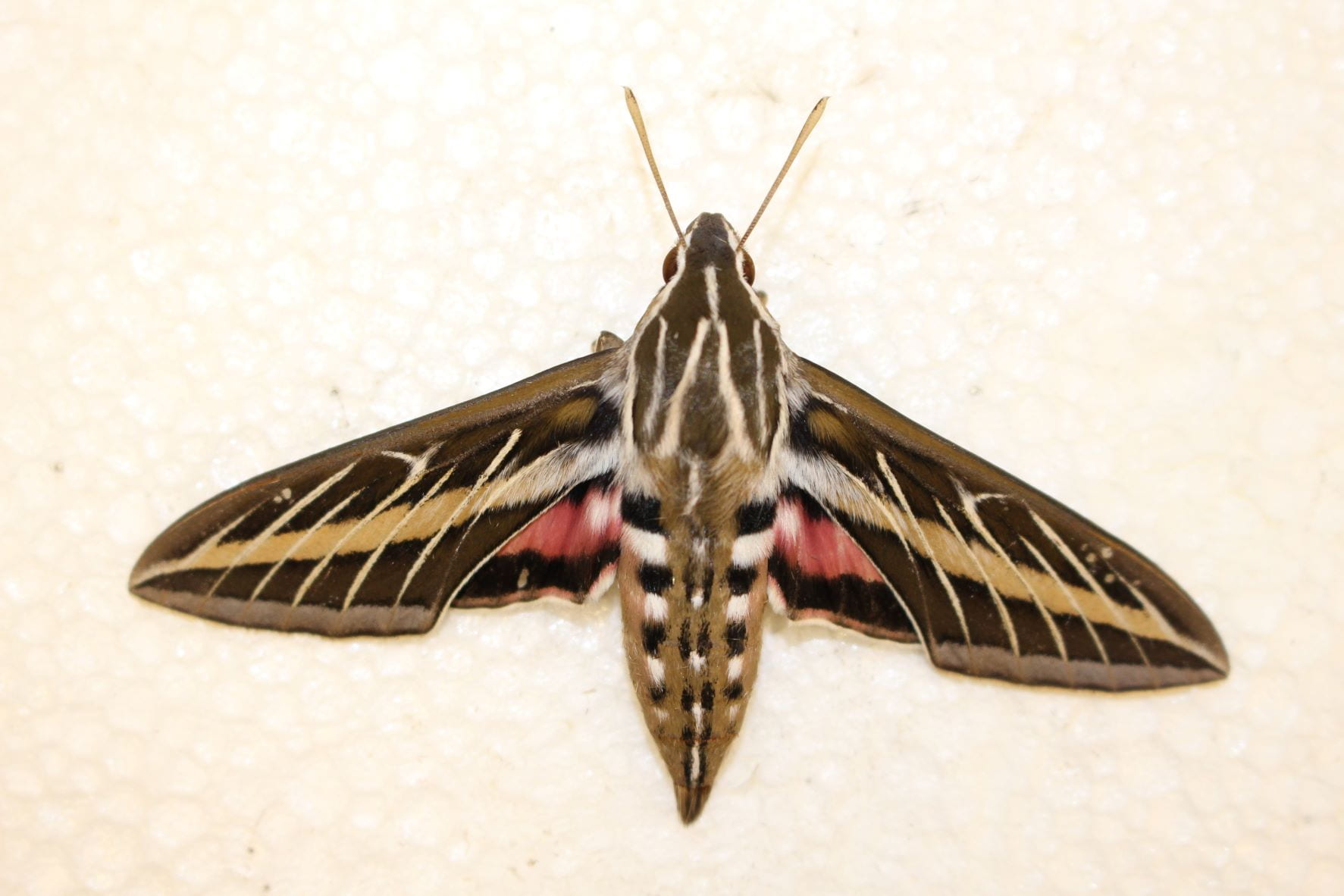–by Raymond Cloyd, Horticultural Entomology
Are you seeing flying insects that resemble hummingbirds visiting various flowers in the garden (Figure 1)? Well, these are moths of the white-lined sphinx, Hyles lineata, which is commonly observed during this time of year. The moths are active day and night feeding on flower nectar using their elongated, tubular mouthparts while hovering like a hummingbird. They feed on a wide variety of flowering plants including cardinal flower, columbine, evening primrose, honeysuckle, penstemon, petunia, and phlox.

Figure 1. White-Lined Sphinx Moth Feeding On Nectar from Flower (Raymond Cloyd, KSU)
The adult body and front wings are green-brown and there are six white stripes on the thorax (middle section of the insect body). The main veins of the front wings are white. There is a distinct light-brown or gray-brown band that extends across each front wing from the tip to the base. The hind wings are dark-brown and there is a broad pink band extending across each wing. There is also a narrow, pink band along the margin (Figure 2).

Figure 2. White-Lined Sphinx Moth (Raymond Cloyd, KSU)
In spring, adult females lay hundreds of eggs on plant leaves. Caterpillars (larvae) emerge (eclose) from the eggs. Mature (older) caterpillars are 3.5 inches (8.9 cm) long.
Caterpillars vary in color but are commonly light green with black stripes extending the length of the body, as well as yellow and orange spots. There is a pointed horn at the end of the body (Figures 3 and 4). Caterpillars feed on weeds including purslane and four o’ clocks. They eventually burrow into the soil and pupate.

Figure 3. White-Lined Sphinx Caterpillar (Raymond Cloyd, KSU)

Figure 4. White-Lined Caterpillar (Raymond Cloyd, KSU)